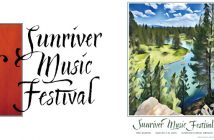For decades we have cherished the lush look of deep green lawns in our front yards, community parks, and public facility grounds. It has been the norm up until recently when the escalating costs of water and landscape maintenance bills reached the point of sticker shock, forcing us to take notice.
Why do certain landscapes require more water, fertilizer and labor to be maintained in the lush look? Basic rules of thumb for understanding water (irrigation) demand for landscaping:
• Lawn requires the most water
• Plant beds require 50 percent less water than lawn areas
• Native plantings require little to no additional water
Basic rules of thumb for understanding materials/labor demands for landscaping:
• Lawn areas require fertilization bi-monthly to maintain healthy lush green color
• Lawn areas require weekly mowing, edging and weeding
• Plant beds require seasonal pruning, fertilization and weeding
• Native areas require little ongoing fertilizer, seasonal weeding (if necessary)
In response many federal agencies, city park and recreation departments, community management companies, as well as residential property owners have begun to address these costs by implementing new programs aimed at conservation and environmentally-friendly landscape solutions.
At Macdonald Environmental Planning, we find many projects built decades ago are re-imaging, focusing on more sustainable landscapes, water efficient irrigation and a careful return to native/ naturalized plantings within community open spaces through the reduction of fully manicured greens.
What strategies are consistently identified to improve the sustainability of our community landscapes and promote environmental stewardship?
• The Federal Department of Energy has developed Best Management Practice: Water-Efficient Landscaping and Water-Efficient Irrigation guidelines for both new and retrofitting existing projects. Key components of the guidelines include using native and other climate-appropriate materials, which require little to no supplemental water and irrigation system components and schedules that are tailored to the specific site’s grading, soil conditions, plant materials, local climate and season… a practice often referred to as xeriscaping.
• The US Department of Veterans Affairs is federally mandated to comply with sustainability and energy reduction requirements and applies either LEED or Green Globes rating systems to each new construction project in order to efficiently achieve those requirements. These systems provide accountability of both the construction and the long-term maintenance programs of each site/ project.
• In the City of Richland, Washington the Park and Recreation Department is actively converting non intensive park areas into naturalized landscapes which in turn reduces the water demand and ongoing maintenance.
• Many community and/ or homeowner’s associations developed with the goal of having lush green parks and native open spaces to draw new residents to purchase homes. As mature communities look at rehabilitating aging outdoor spaces, planning efforts are identifying strategies for reducing the reliance on water and labor intensive landscapes.
• Cities across the country are developing guidelines, pamphlets and digital media directed towards resident education.
For example, the City of Bend developed a program called Water Wise, along with websites containing information relating to xeriscaping, like this one, where it provides a step by step approach to planning and implementing xeriscaping into all landscapes.
www.bendoregon.gov/modules/showdocument.aspx?documentid=2716
The most important take away that we must have from our approach to sustainable and maintainable is that the closer every landscape trends to nature the less dependent we will be on supplemental irrigation and continuing landscape maintenance needs.
Laurel Macdonald Bonnell, senior landscape architect w/ Macdonald Environmental Planning, P.C., and chair of the Landscape Committee for The Parks Community, Bend.
541-383-1895,




